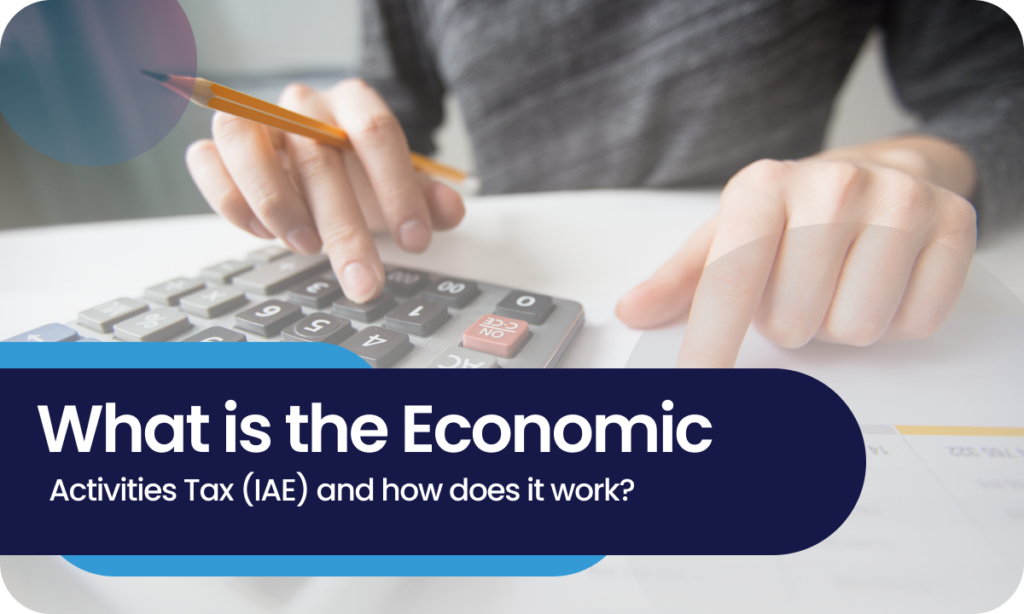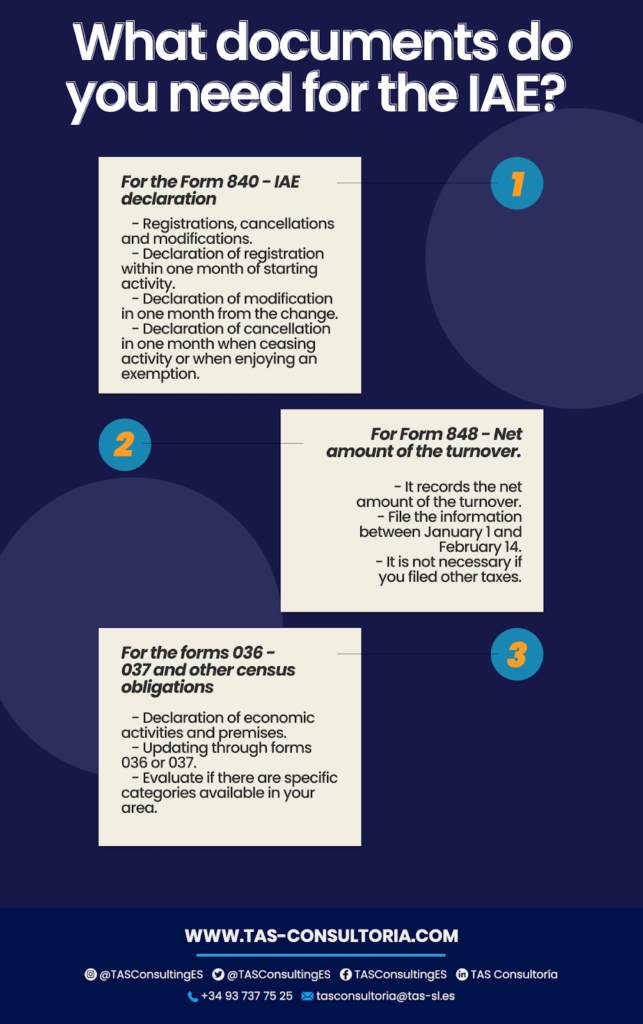
Knowing how the Economic Activities Tax, or IAE, works is key to a smooth tax journey. Below, we will explore in detail what the IAE is and how it operates in the Spanish business environment. So if you are looking for clarity around this tax and how it can affect your business, we invite you to read on and clear up your concerns!
What is the overview of the Business Activity Tax?
The Economic Activities Tax (IAE) is a tax that requires payment by the following companies:
- Individuals (self-employed)
- Companies and entities without legal personality (civil societies and communities of goods).
Of course, provided that they carry out an economic activity in Spanish territory.
This tax is administered by the municipalities. The State uses the data obtained through it to monitor other taxes, such as the Value Added Tax (VAT). In addition, there is also the Personal Income Tax (IRPF).
The tax period for this tax covers the entire calendar year. However, there are situations such as the registration as self-employed on May 12. There, the period affected by the IAE will be limited from that date until the end of the year in question.
In case you have to pay the IAE, it is important to know that its collection is in charge of the local Treasuries. This means that the City Council will establish the deadlines for the voluntary payment period by means of an ordinance. However, there are certain situations in which an exemption from payment is granted, such as:
- Individuals who are not self-employed.
- Corporate taxpayers, civil societies and entities without legal personality are obliged to comply with their responsibilities.
- Non-resident income taxpayers with a net turnover of less than 1,000,000 euros.
You may also be interested in: Tax reform: what is the new 23% rate?
What documents are required for the IAE?
Any person, whether an individual or a legal entity, who carries on a business activity in Spain is subject to taxation. Therefore, he/she has the obligation to register in the Economic Activities Tax and to follow the corresponding procedures. That is to say, the procedures for registration or deregistration are quite straightforward.
Form 840 for the Economic Activities Tax (IAE) return.
This form is essential for filing returns related to additions, deletions or modifications to the tax.
The registration statements must be filed automatically. Specifically, when starting an activity within one month from the start date or when ceasing to be exempt.
The modification declaration must be filed within one month from the occurrence of the event that caused the change. While the declaration of cancellation must be filed in case of cessation of the activity. Always within one month from the date of cessation or when enjoying a tax exemption.
Form 848 to report the net amount of the turnover
On the other hand, form 848 allows taxpayers to record the net amount of their turnover for IAE purposes.
This document must be filed with the Tax Agency between January 1 and February 14. And it must be just of the year in which the communication must take effect.
That said, it is not necessary to complete this form if you have already filed the Corporate Income Tax. Also the Non-Resident Income Tax or the form 184. Also called “Informative declaration. Entities in income attribution regime”.
Other census obligations (forms 036 – 037)
All persons and entities registered in the census of entrepreneurs must report all economic activities they carry out. In addition to the list of premises or establishments in which they operate by means of the census declaration. Using forms 036 or 037.
That said, the IAE provides a broad list of categories in which each professional can include his or her business.
If at another time you want to review this information, keep this checklist of the requirements you need handy:

You may also be interested in: Everything you need to know about the new tax reform 2023
IAE epigraphs: classification of activities
As mentioned above, when registering with the Tax Authorities, you must specify the activities you plan to carry out. Therefore, these activities must coincide with one of the headings detailed in the Economic Activities Tax (IAE). These are divided into three broad sections:
- Business activities (including livestock, mining, industry, commerce and services).
- Professional activities (related to agriculture, livestock, hunting, fishing, energy, water, mining, telecommunications, etc.).
- Artistic activities (related to cinema, theater, circus, dance, music, sports, among others).
The heading under which your activity falls will determine the applicable VAT rate. There are different VAT rates depending on the product you sell.
To find the most appropriate heading for your company, you can consult the table published by the Tax Agency. You can also download the complete list if you need a more detailed review.
You may also be interested in: All about the tax on large fortunes in Spain
The Economic Activities Tax (IAE) is a crucial aspect of the Spanish business world. Now that you have a more solid understanding of how it works, we encourage you to take the next step.
If you have concerns or need personalized advice for your tax situation, do not hesitate to contact our experts. Write to us at tasconsultoria@tas-sl.es and tell us about your needs.
We are here to help you navigate the complexities of the IAE and make sure your business is compliant with all tax regulations. Request an expert consultation and take control of your tax situation today!




Your email address will not be published .
Required fields are marked with *